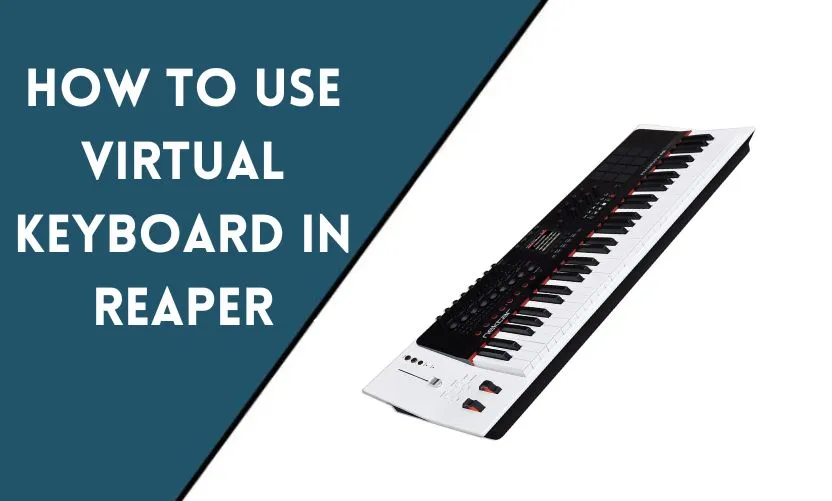
Are you tired of manually entering musical notes into your digital audio workstation (DAW)? Do you want to save time and improve your productivity as a music producer? If yes, then it’s time to learn how to use a virtual keyboard in Reaper.
Reaper is a popular DAW that offers a wide range of features to its users. One of these features is the virtual keyboard, which allows you to input notes using your computer keyboard instead of a MIDI keyboard. In this article, we will guide you on how to use the virtual keyboard in Reaper and explore its various functions.
What is a Virtual Keyboard?
A virtual keyboard is a software-based keyboard that allows you to input musical notes using your computer keyboard instead of a physical MIDI keyboard. It is a convenient tool for music producers who do not have access to a MIDI keyboard or prefer not to use one.
Why Use a Virtual Keyboard in Reaper?
Using a virtual keyboard in Reaper has several benefits, including:
- Convenience: You can input notes using your computer keyboard instead of a physical MIDI keyboard.
- Cost-effective: Virtual keyboards are free and do not require any additional hardware.
- Accessibility: Virtual keyboards are available within Reaper, so you do not need to install any external software.
- Productivity: Using a virtual keyboard can save you time and improve your workflow as a music producer.
How to Enable the Virtual Keyboard in Reaper
To enable the virtual keyboard in Reaper, follow these steps:
- Open Reaper and create a new project or open an existing one.
- Click on “Options” in the menu bar and select “Show Virtual MIDI Keyboard.”
- A virtual keyboard interface will appear on your screen.
How to Use the Virtual Keyboard in Reaper
Navigating the Virtual Keyboard Interface
The virtual keyboard interface consists of a piano keyboard and several buttons that allow you to control various functions.
Inputting Notes using the Virtual Keyboard
To input notes using the virtual keyboard, follow these steps:
- Click on the piano keyboard to select the note you want to input.
- Press the corresponding key on your computer keyboard.
Using the Velocity Slider in the Virtual Keyboard
The velocity slider in the virtual keyboard allows you to adjust the velocity of the notes you input. To use the velocity slider, follow these steps:
- Click on the velocity slider and drag it up or down to increase or decrease the velocity of the notes.
- Input notes using the virtual keyboard.
Editing Notes in the Virtual Keyboard
You can edit notes in the virtual keyboard interface by selecting them and dragging them to a new position. You can also adjust their length by dragging the right edge of the note.
Using the Sustain Pedal in the Virtual Keyboard
The sustain pedal in the virtual keyboard interface allows you to sustain notes. To use the sustain pedal, follow these steps:
- Click on the sustain pedal button in the virtual keyboard interface.
- Input notes using the virtual keyboard.
- Click on the sustain pedal button again to release the sustained notes.
Using the Arpeggiator in the Virtual Keyboard
The arpeggiator in the virtual keyboard interface allows you to play chords as arpeggios. To use the arpeggiator, follow these steps:
- Click on the arpeggiator button in the virtual keyboard interface.
- Input a chord using the virtual keyboard.
- The arpeggiator will automatically play the chord as an arpeggio.
Customizing the Virtual Keyboard in Reaper
Reaper allows you to customize the virtual keyboard interface to suit your preferences. To customize the virtual keyboard, follow these steps:
- Click on “Options” in the menu bar and select “Virtual MIDI Keyboard.”
- In the virtual keyboard interface, click on the “Options” button.
- From the options menu, you can customize the virtual keyboard interface by changing the color, size, and layout of the keys.
Tips and Tricks for Using the Virtual Keyboard in Reaper
Here are some tips and tricks to help you make the most of the virtual keyboard in Reaper:
- Use the velocity slider to add dynamics to your notes.
- Experiment with different arpeggio patterns to create interesting rhythms.
- Use the sustain pedal to create a more fluid and expressive performance.
- Customize the virtual keyboard interface to match your workflow.
Conclusion
In this article, we have explored how to use the virtual keyboard in Reaper. We have discussed its various functions and outlined the steps to enable and customize it. By using the virtual keyboard, you can save time, improve your productivity, and enhance your creativity as a music producer.
Frequently Asked Questions
Do I need a physical MIDI keyboard to use Reaper?
No, you can use the virtual keyboard in Reaper to input notes.
Can I customize the layout of the virtual keyboard in Reaper?
Yes, you can customize the color, size, and layout of the keys in the virtual keyboard interface.
Can I use the sustain pedal with the virtual keyboard in Reaper?
Yes, you can use the sustain pedal button in the virtual keyboard interface.
Can I use the arpeggiator with chords in the virtual keyboard in Reaper?
Yes, you can use the arpeggiator to play chords as arpeggios.
Does Reaper have any other built-in tools for music production?
Yes, Reaper offers a wide range of features for music production, including audio recording, MIDI sequencing, and mixing and mastering tools.










